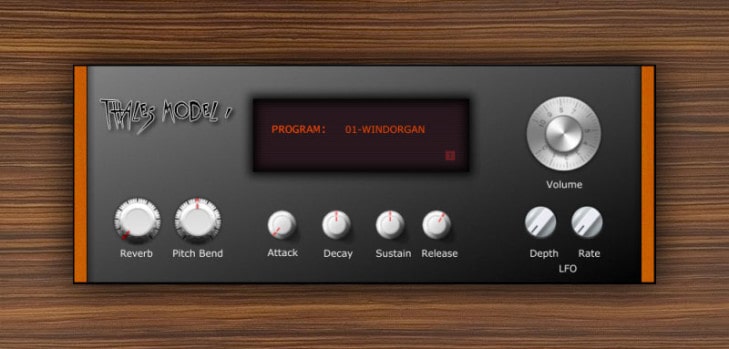Pierre Parenteau aka SampleScience has released Thales Model I Demo, a free version of the new Thales Model I rompler instrument in VSTi/AUi plugin formats for Windows and Mac OS.
The free version of the plugin is fully functional, except for the fact that it features a limited sound set in comparison to the full version. We’ve asked Pierre to tell us more about the full version of Thales Model I and he also told as about what we can expect from the freebie version of the instrument. Enjoy the interview and scroll down the page for the download link!
BPB: Hi Pierre and thanks for joining for in this interview! You’ve just released a virtual instrument called Thales Model I. Can you tell us a bit more about Thales Model I and what were you goals when creating it. Were you inspired by some specific hardware device. The concept reminds me a bit of sound module instruments which were fairly popular back in the nineties!
SampleScience: Thales Model I is a rompler based on waveforms sampled from public domain films in which early computer synthesizers are presented. They are mostly from nineteen sixties Bell Laboratories documentaries about computer sound design, computer generated visuals and voice synthesis. Indeed, I was inspired by hardware devices, mainly the EMU sound modules that were popular in the nineteen-nineties. Visually, the interface is inspired by nineteen seventies Plato computers (for the small screen) and early sixties Braun amplifiers. I wanted to create something simple, elegant and inspiring.
BPB: Can you tell us a bit more about the sounds which are included in Thales Model I and how they were made? Also, do you have any specific sound design tips which you’d like to share with BPB readers?
SampleScience: The sounds are waveforms from public domain films, like I said earlier, but I had to modify them in order to make them loop seamlessly and this was the hardest thing to accomplish with the project. While working on the sound’s loop points, I’ve learned that you cannot simply cross fade a basic waveform and expect it to sound natural, so I had to go a step further and manually adjust the waveforms to make them loop seamlessly. It was long and tedious work, but I feel it made the whole instrument a lot better. In some cases, I’ve used cross fading to create an interesting phasing effect. My advice is – when working with basic waveforms, don’t hesitate to micro edit the sound to make it loop seamlessly, it’s worth the trouble and after a while it becomes second nature.
BPB: Will there be another Thales release in the future, perhaps Thales Model II? Also do you have any other sound design plans in 2015?
SampleScience: Judging by the unexpected success of Thales Model I, I can guarantee there will be a Model II. But before that I have plans for other sound modules, some weird and very specialized ones, and others more conventional.
BPB: You’ve also released a free version of Thales Model I, which is pretty neat! Can you tell us about what’s included in the freebie version?
SampleScience: The free version is identical to the full version, the only difference being the number of sounds; the free version has four different sounds to choose from whereas the full version has 27 different tones.
BPB: Thanks again for the interview and we’re looking forward to more releases from you!
SampleScience: Thank you for your support and for making the electronic music making thriving with your blog! :-)
Audio Demo
Check out the Thales Model I audio demo:
Download
Thales Model I Demo is available for free download via Sampleism (23.5 MB download size, ZIP archive, 32-bit & 64-bit VSTi/AUi plugin format for Windows & Mac OS, made with Maize Sampler).


